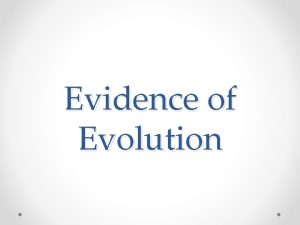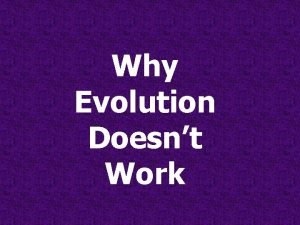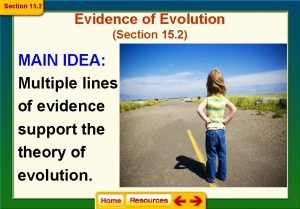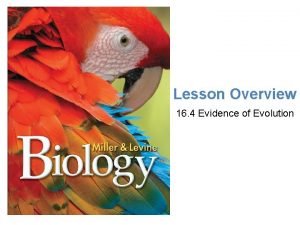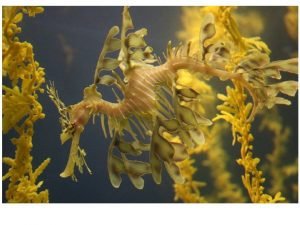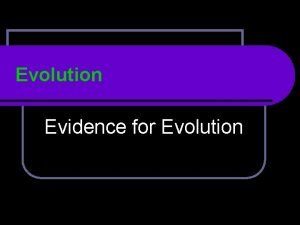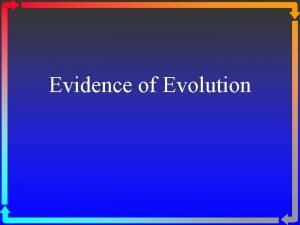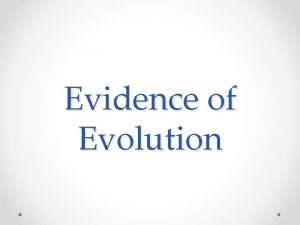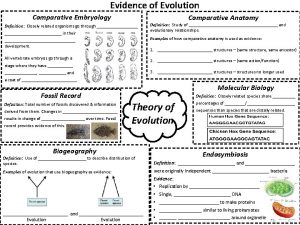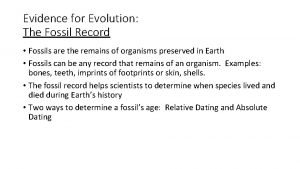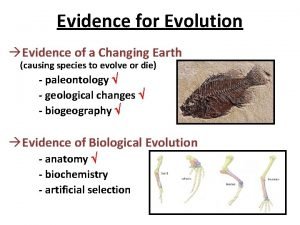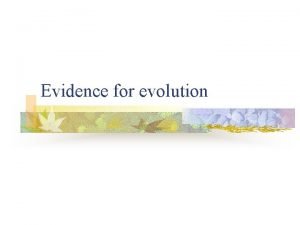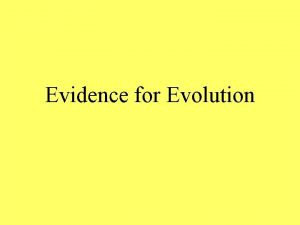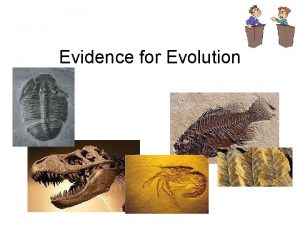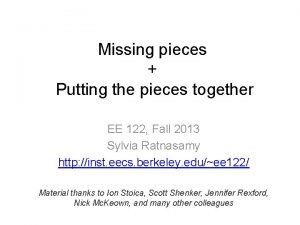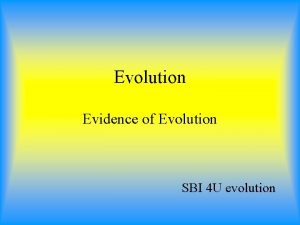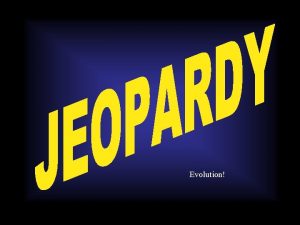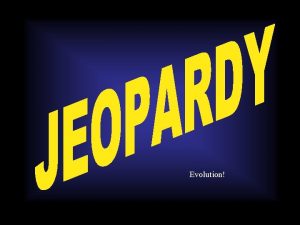Evidence for Evolution 5 main pieces of evidence















- Slides: 15

Evidence for Evolution 5 main pieces of evidence

I. �Biogeography • The geographical distribution of species. • Islands have many species that are closely related to nearest mainland

II. The Fossil record • The fossil record is incomplete • However many key links have been discovered. • Prokaryotes are placed as the ancestors of all life.

• There is a chronological appearance of vertebrates beginning with fish, followed by amphibians, reptiles, birds, mammals.

III. Comparative Anatomy • Anatomical similarities among species in the same taxonomic category show a reflection of common descent

• Homologous structuressimilar structures in different species based on a common ancestor

• Analogous structures- similar structures in different species based on adaptation • Vestigial structures - structures of little or no use to an organism.


IV. Comparative embryology • Closely related species go through similar stages in embryonic development – Fish, amphibians, reptiles, birds, and mammals all have gill slits on the sides of their throats

• As development progresses traits develop into divergent structures


• Evolutionist study ontogeny and phylogeny to develop connections in evolution

V. Molecular Biology • Hereditary background is reflected in genes and proteins • Siblings have greater similarities in DNA than unrelated members of the same species


• Even bacteria and mammals have some proteins in common.
 4 types of evidence for evolution
4 types of evidence for evolution Evidence of evolution
Evidence of evolution Evidence for evolution doodle notes
Evidence for evolution doodle notes Section 15-2 evidence of evolution answer key
Section 15-2 evidence of evolution answer key Common descent
Common descent Molecular biology evidence of evolution
Molecular biology evidence of evolution Evidence of evolution
Evidence of evolution 4 types of evidence for evolution
4 types of evidence for evolution What are the 4 types of evidence?
What are the 4 types of evidence? Definition of comparative embryology
Definition of comparative embryology How amber is formed
How amber is formed Evidence of evolution stations answer key
Evidence of evolution stations answer key Biochemical evidence examples
Biochemical evidence examples Embryology evidence of evolution
Embryology evidence of evolution Embryology evidence of evolution examples
Embryology evidence of evolution examples Molecular biology evidence of evolution
Molecular biology evidence of evolution
